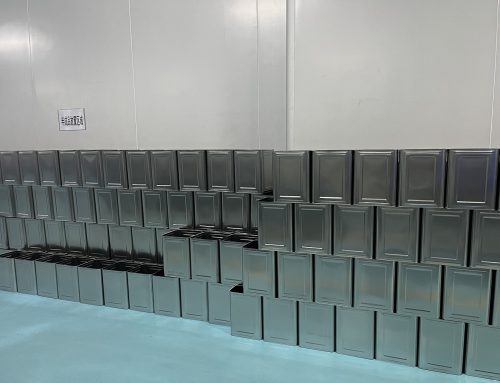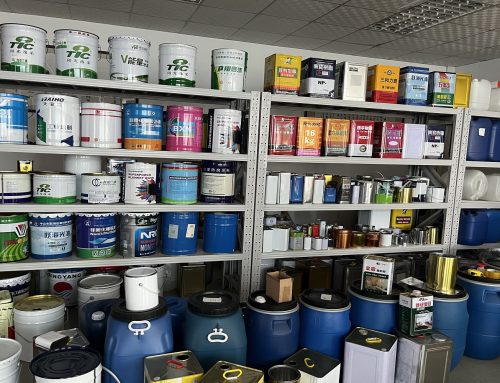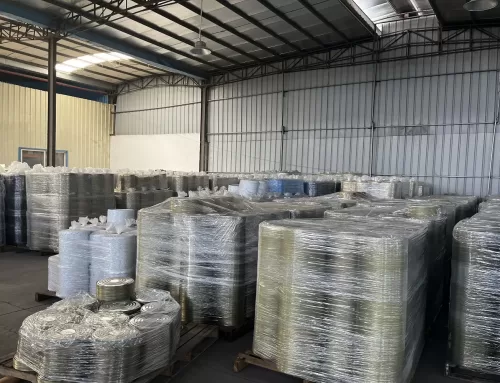The production and manufacture of soldered three-piece cans is divided into three steps, namely the processing of the can body, the processing of the can lid, and the combined processing of the can body and the lid.
(1) Processing of the can body Generally speaking, the processing process of the can body is: cutting the material → the body blank → bending → corner cutting and cutting → end folding → rounding → welding flux → flattening → tin Welding→wiping tin scraps→cooling→flanging→can body is completed.
Firstly, the tin-plated steel sheet is cut to the required specifications (length and width) of the can body to form a can body blank; after the bending treatment, bevels and notches are cut at the two ends of the blank, and the can body is bent and joined longitudinally. Seam hooks (ie end folding); roll the can body sheet material folded at the end into a cylindrical shape, hook and press the hooks of the longitudinal seam to form a longitudinal seam (ie flattening), and at the same time at the seam Apply flux; after preheating, perform soldering and welding, and then wipe off the excess tin chips; after cooling, use a mold to apply squeezing force to the circumference of the two ports of the can body to form an outwardly expanding bell mouth (ie, flanging) , Thus completing the entire processing process of the can body.
The can body processing technology mainly has two methods: semi-automatic can-making equipment and fully-automatic can-making equipment. Semi-automatic canning equipment The special equipment for making round cans generally includes shearing machine, corner cutting machine, end folding machine, rounding machine, flattening machine, soldering machine and flanging machine, etc.; automatic can making equipment manufacturing The special equipment for round can body generally includes automatic double circular knife shearing machine, automatic combined can making machine and automatic flanging machine, etc. The automatic continuous production line composed of the above three kinds of automatic equipment greatly improves the production efficiency of cans.
(2) Processing of can lids The processing technological process of can lids is: cutting board and cutting → oiling → punching lid → crimping → glue injection → drying → completion of the lid.
When making cover. First, the tin-plated steel sheet is cut into slats with corrugated edges (in order to improve the utilization rate of the plate), and after oiling (oiling can reduce mechanical scratches on the plate during the capping process), the corrugated slats are punched The lid blank (composed of reinforcement ring, plane and inclined surface) is stamped on the lid machine, and then the hook is rolled out by the crimping and rolling mechanism, and the sealant is injected into the hook of the lid. After drying, it forms a belt The elastic membrane can cover completes the entire processing process of the can cover.
There are two main methods of can lid processing technology: semi-automatic lid making machinery and fully automatic can making machinery. In the production method of semi-automatic lid making machinery, each process is completed on a variety of single machines, and the production efficiency is low; automatic can making machinery includes wave pressure cutting plate machine, automatic cap punching machine, can lid automatic crimping machine, can lid glue injection machine And dryers, etc.
(3) Combined processing of can body and can lid The combined processing process of can body and can lid is: can body feeding→can lid addition→double crimping sealing→empty can processing is completed.
After the can body and lid are processed, the can can be sealed. Put the can body with the lid and send it to the lower pressure head of the can sealing machine for positioning, the lower pressure head rises, and the upper pressure head presses the can body and lid clamp together, and then the can body can lid is pressed by the crimping machine head The sealing flange implements double crimping. After the crimping is completed, the lower pressure head drops and the empty can is discharged by the discharge device to complete the combined processing of the can body and the lid, thus completing the entire processing process of the empty can. After the empty can is processed, it can be used for product packaging after other necessary treatments. After the product is filled, the other piece of can is sealed with the lid to complete the entire metal can product packaging process.
The combined processing technology of the can body and the lid, that is, the sealing combination of the can body and the lid, mainly adopts an automated capping machine, or called an empty can sealing machine (in order to distinguish it from the can sealing machine in the packaging process, of course, the empty can The can sealing machine can also seal the metal cans filled with materials), mainly including automatic can feeding device, automatic lid feeding and capping device, crimping and capping device, etc., of which the crimping and capping device is a capping machine Core part.




